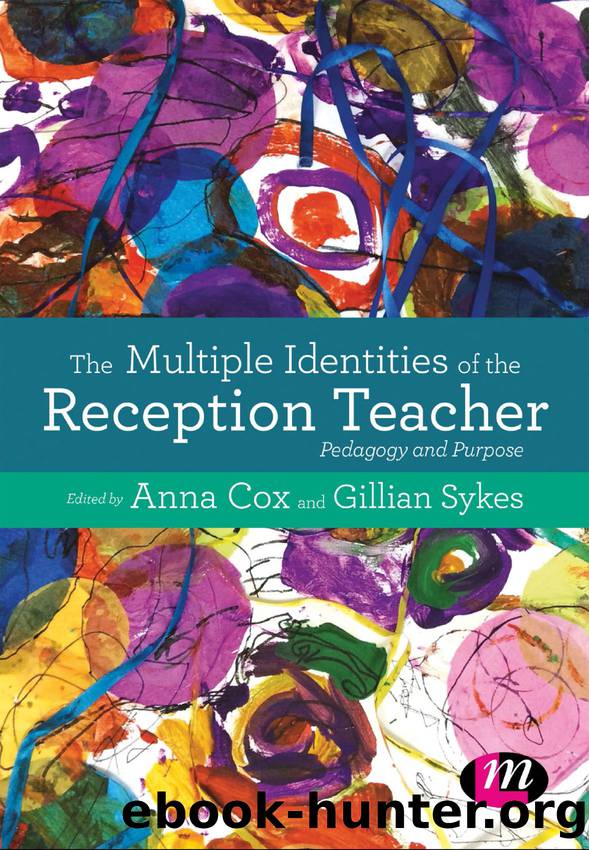The Multiple Identities of the Reception Teacher by Cox Anna;Sykes Gillian; & Gillian Sykes

Author:Cox, Anna;Sykes, Gillian; & Gillian Sykes
Language: eng
Format: epub
ISBN: 9781473968189
Publisher: SAGE Publications, Limited
Published: 2019-11-22T20:23:24.067883+00:00
Figure 5.5 Our solar system
Point to ponder
Reflect on the five domains of development explored by Eleonora in Chapter 2 and look for signs of them being supported by the enabling environments illustrated in the vignettes in this chapter.
How long should artwork that has been created collaboratively remain on âdisplayâ? Consider the artwork we choose to hang in our own home and work spaces? Do we need to hurriedly remove it every six weeks because our focus has changed?
Conclusion
In concluding this chapter our hope is that you will be inspired to consider the individuality and uniqueness of your classroom space, whatever it may be and whatever stage it may be at. Our classroom spaces are places of wonder and they should reflect that privilege we feel and share in working with the unique individuals who make up our Reception class. Sources of inspiration should remain as that, not models to follow and reproduce. At the beginning of this chapter we identified Bruner who reminded us that school should be a place where children are invited to grow in mind, in sensibility and in belonging to a broader community; this is an aspiration we can all hold true. After all, consider the studio space that Joan Miró used in Majorca in comparison to that of Barbara Hepworth in St Ives, Cornwall. Both could be described as artistic geniuses, both needing entirely different spaces to be inspired but born out of the entirely different communities to which they belonged. There must have been similarities in the tools that they needed and to some extent the ways in which these may have been organised, but ultimately they needed spaces that fostered their creativity and as a result produced brilliance.
Point to ponder
If the hundred languages of expression exist, how does my environment support the communication of them? As an Early Years team do we share an understanding of what purpose our environment has? Can a staff meeting/team meeting be focused on the environment? (Use the list of quotes and ideas about the environment as a prompt for discussion.) Have I reminded myself that this is going to take time?
Download
This site does not store any files on its server. We only index and link to content provided by other sites. Please contact the content providers to delete copyright contents if any and email us, we'll remove relevant links or contents immediately.
The Art of Coaching Workbook by Elena Aguilar(51004)
Trainspotting by Irvine Welsh(21524)
The Secret History by Donna Tartt(18865)
Twilight of the Idols With the Antichrist and Ecce Homo by Friedrich Nietzsche(18515)
All the Missing Girls by Megan Miranda(15601)
Cat's cradle by Kurt Vonnegut(15193)
Ready Player One by Cline Ernest(14534)
Talking to Strangers by Malcolm Gladwell(13236)
Fangirl by Rainbow Rowell(9109)
The remains of the day by Kazuo Ishiguro(8833)
The Compound Effect by Darren Hardy(8821)
Thirteen Reasons Why by Jay Asher(8802)
Tools of Titans by Timothy Ferriss(8230)
Periodization Training for Sports by Tudor Bompa(8175)
Wonder by R. J. Palacio(8014)
The Lover by Duras Marguerite(7834)
A Court of Wings and Ruin by Sarah J. Maas(7655)
Change Your Questions, Change Your Life by Marilee Adams(7641)
The Complete Stick Figure Physics Tutorials by Allen Sarah(7312)
